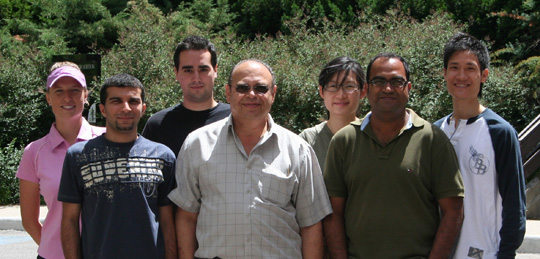Amin Rizkalla
Contact
Department of Chemical and Biochemical Engineering
Thompson Engineering Building,
Room TEB 435
Western University
Tel: 519-661-2111 ext. 82212/86086
Fax: 519-661-3498
arizkalla@eng.uwo.ca
Research Interests
Dr. Rizkalla’s main area of research is in wet chemical synthesis and physical and mechanical and biological characterization of glasses, ceramic, nanocomposite and hybrid biomaterials that are used for dental and orthopaedic applications.
Nano-Ceramic Fillers for Composite Biomaterials
Functionalized nano-ceramic particles, fibers and nanotubes are being synthesized by so-gel chemistry, hydrothermal and electrospinning processes. These nanofillers exhibit unique shapes and provide mechanical interlocking with the resin matrix. These modifications result in a significant increase in the elastic moduli and fracture toughness of dental composites. Additional work is being conducted in the synthesis and characterization of nano-composites.
Synthesis of High Strength Machinable Glass-Ceramics for the CEREC System
Wet chemical synthesis provides glass-ceramics of controlled chemistries and improved strength, modulus of elasticity and fracture toughness. A wide range of glass formulations in the system K2O-Na2O-CaO-F-A2O3-SiO2-X are being synthesized by wet chemical methods where X is a network modifier such as TiO2, ZrO2, La2O3, CeO2, and Y2O3. Synthesized powders are processed using novel sol-gel chemistry. From DTA exotherms of resultant glasses, kinetics of crystallization is studied. Optimum heating schedule for each glass will depend upon chemical composition. Effect of structure and composition on mechanical and wear properties of glass-ceramics are studied and compared with Commercial CEREC systems.
Kinetics of Crystallization of Synthesized Glasses
The control of the heating schedule, nucleation and crystallization of glasses is important to optimize the physical chemical and mechanical properties of these materials. The kinetics of crystallization of ion leachable and bioactive and castable glass formulations was determined by differential thermal analysis (DTA). We have demonstrated that DTA is a valuable technique for the optimization of heat treatment that leads to superior properties of biomedical glass-ceramics.
on Leachable Glasses
We have developed ion leachable glasses that contain a high percentage fluoride. When these glasses were reacted with poly (acrylic acid), experimental glass-ionomer cements were obtained. These cements exhibited superior mechanical properties & fluoride release that was significantly higher than any commercial material available on the market. The main advantage of high fluoride release is the reduction of secondary caries and stimulation of bone growth.
Bioactive Glass-Ceramics-Polymer Composites
We have conducted preliminary research dealing with the synthesis and characterization of bioactive glasses and glass-ceramic-polymer composites. We found that the ionic release of calcium and phosphorus from the glass is dictated by the concentration of non-bridging oxygen within the glass materials. We also found that the silane treatment can produce a barrier to ionic release. In contrast to conventional methacrylate bone cement, the range of dynamic elastic moduli values for the experimental composite systems were significantly higher and within the typical range of values for cortical bone. This finding has the potential of reducing stress-shielding effect between the implant and bone. More research is being developed in the area of thin film coating of hydroxyapatite and bioactive glasses onto metal substrates and high strength bioceramics to be used for dental and orthopaedic implants. Additional work on the synthesis of porous bioceramics, biodegradable polymers and biocomposites is being conducted for scaffolds used for dental and orthopaedic applications. Other research interest is in micro-encapsulation and controlled release of bio-effectors as well as immobilization of proteins for promotion of mineralization.
My Research Group


